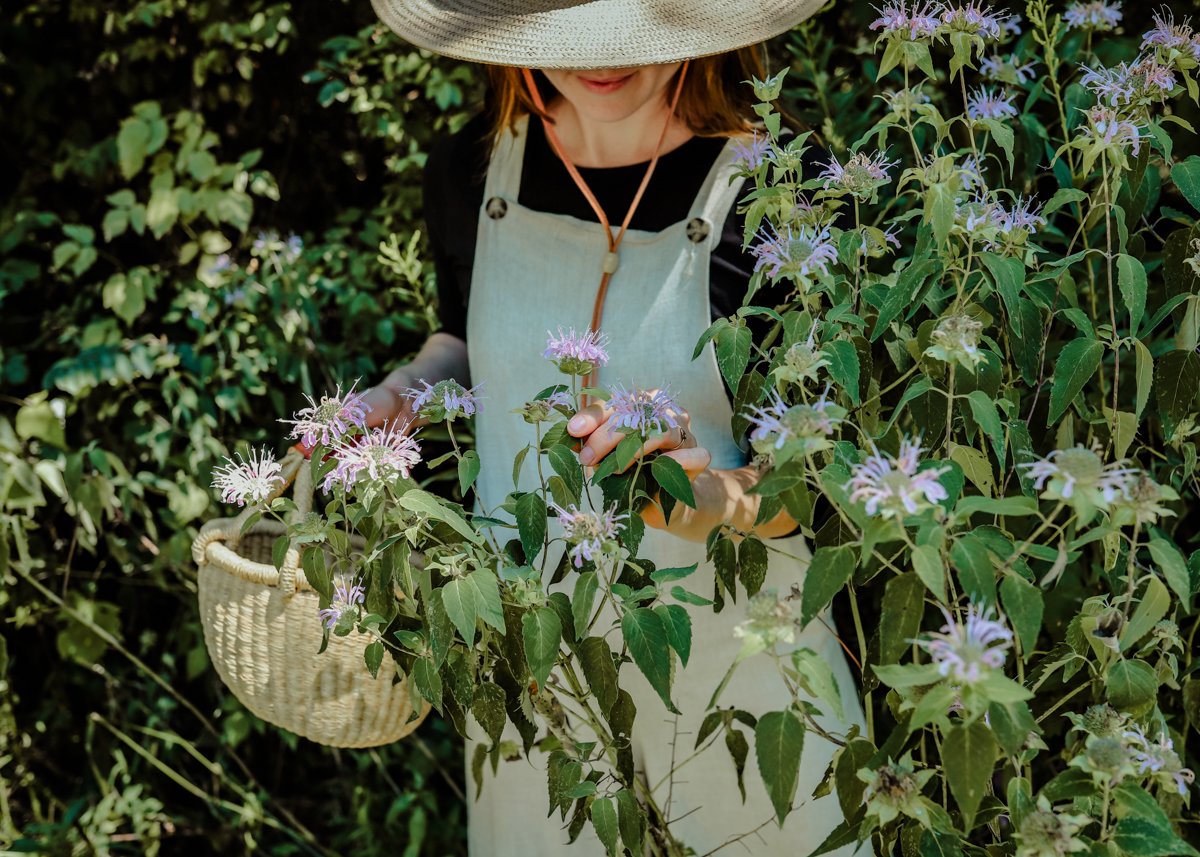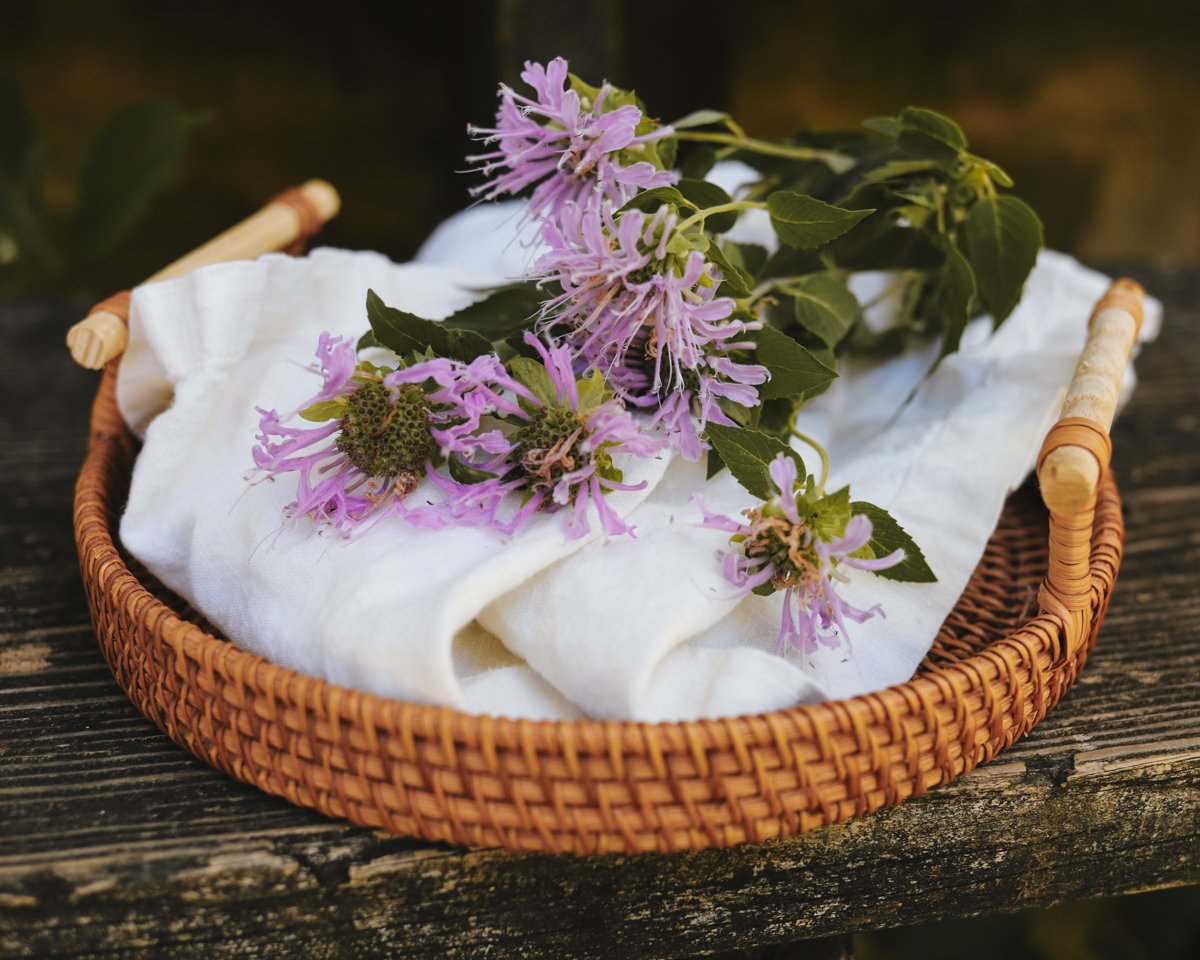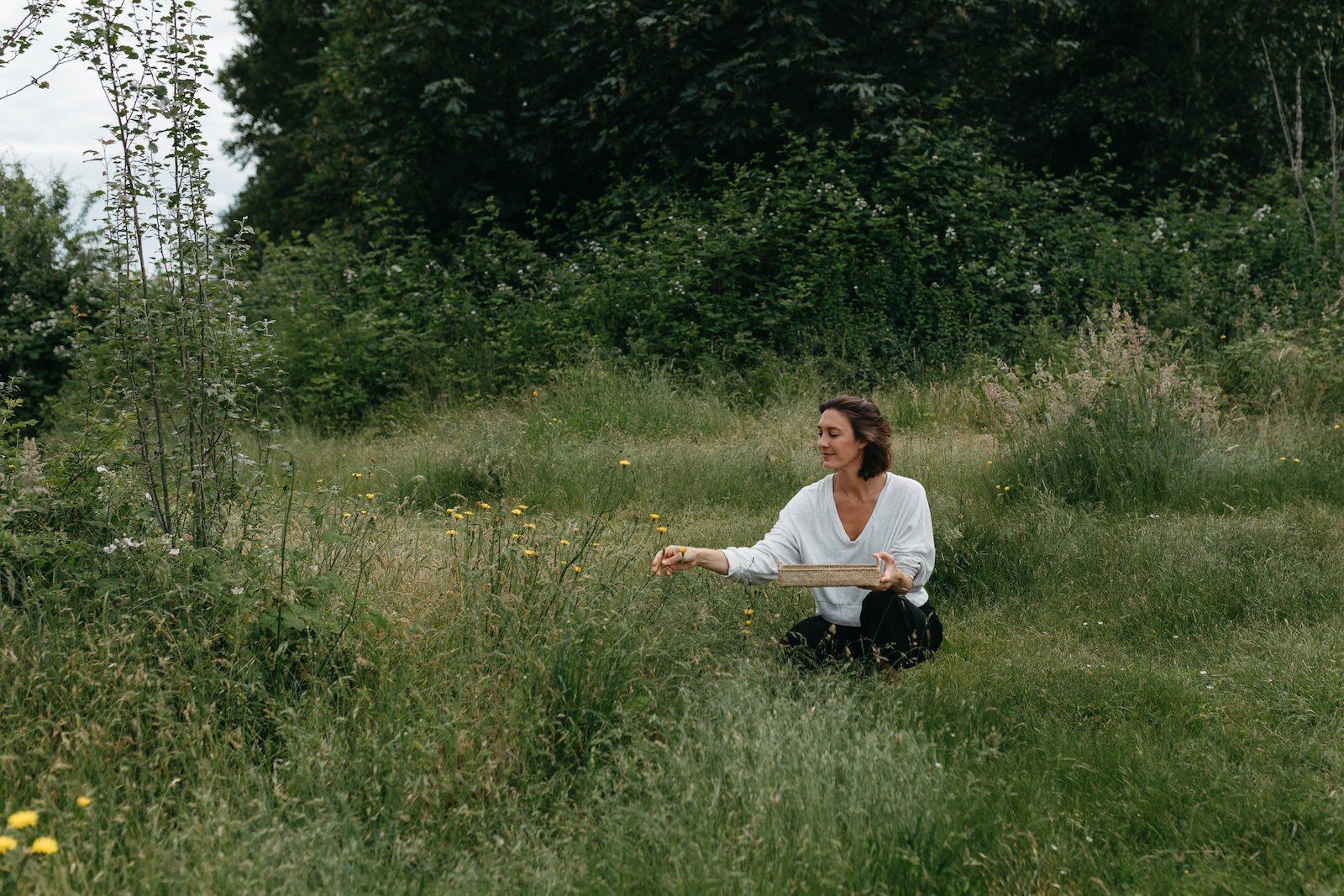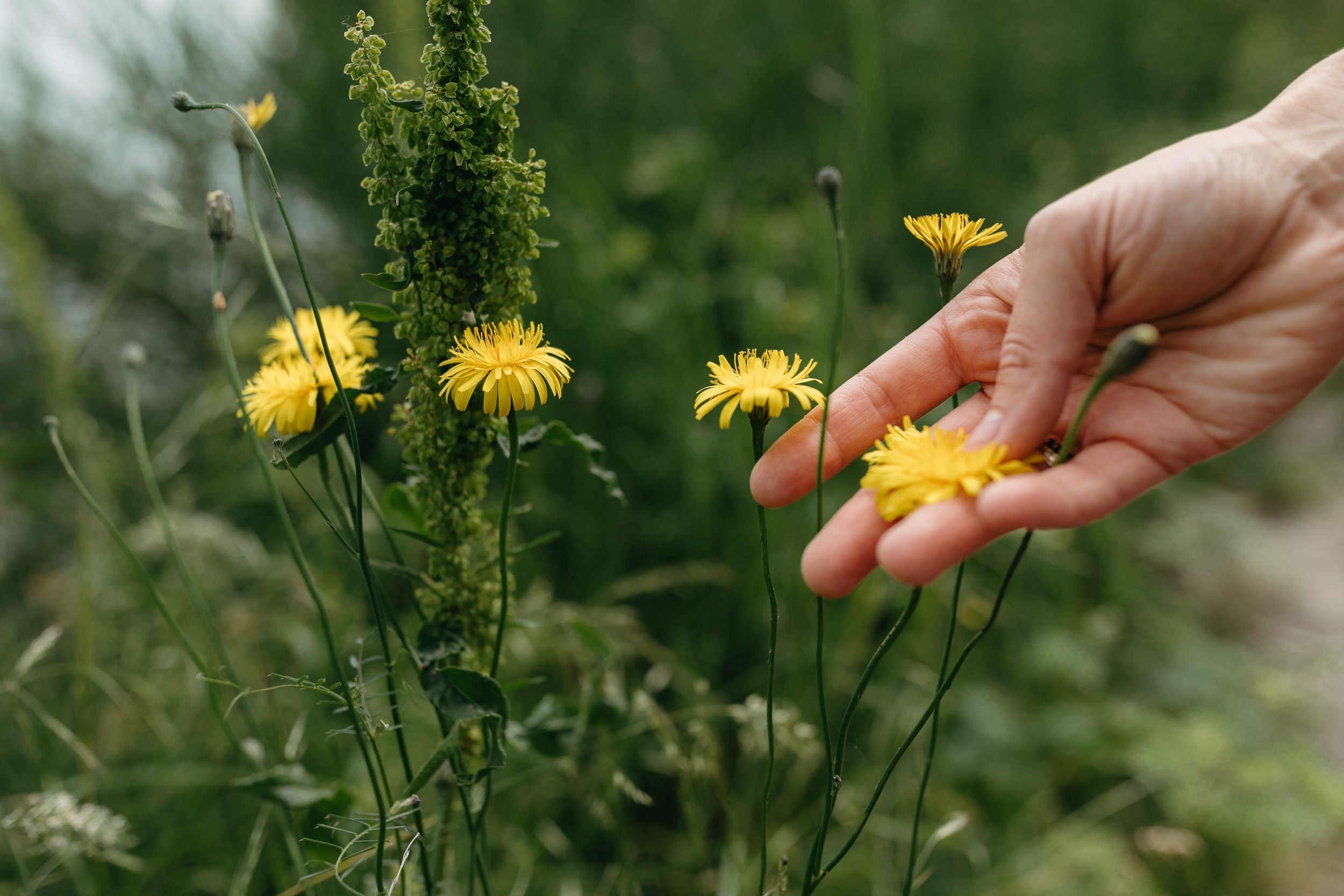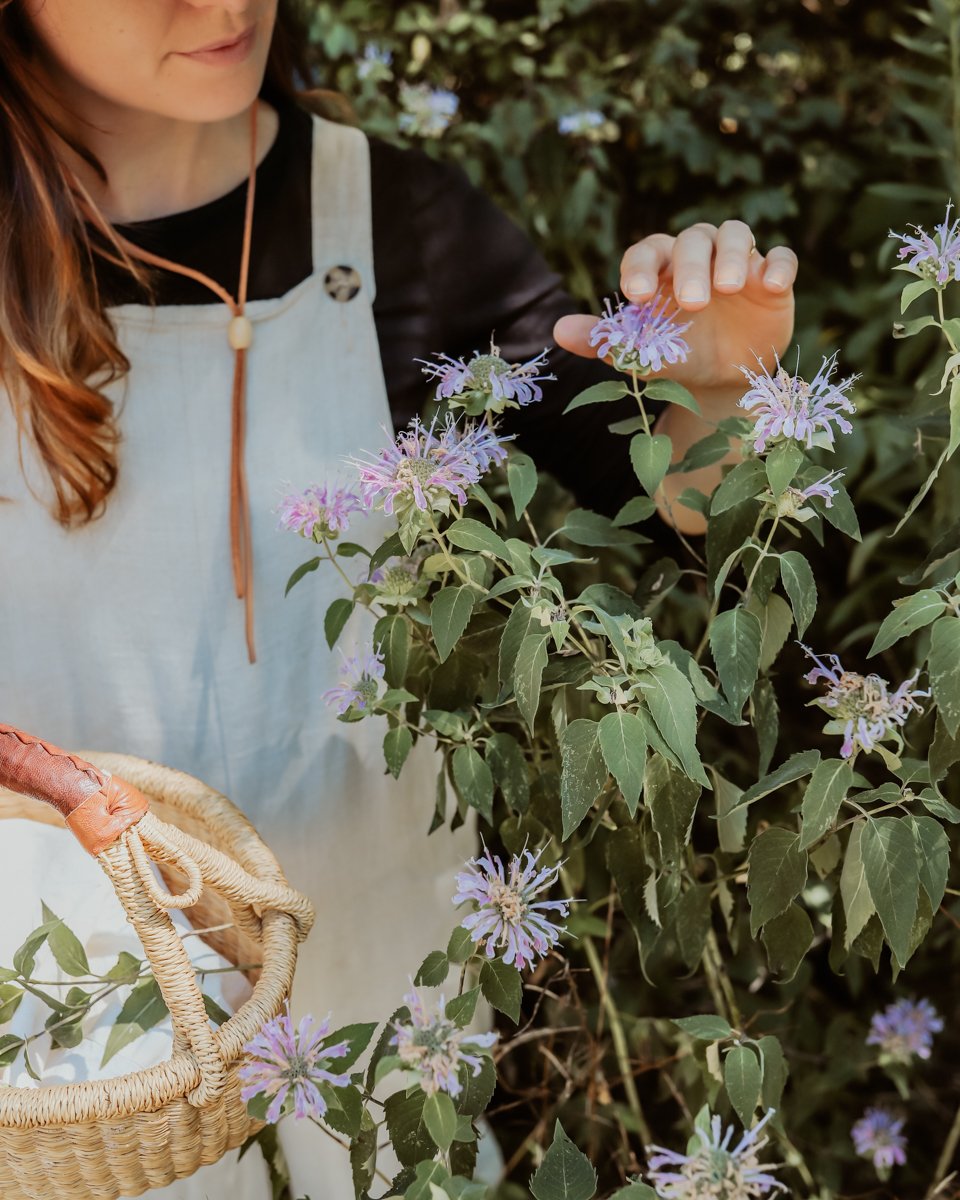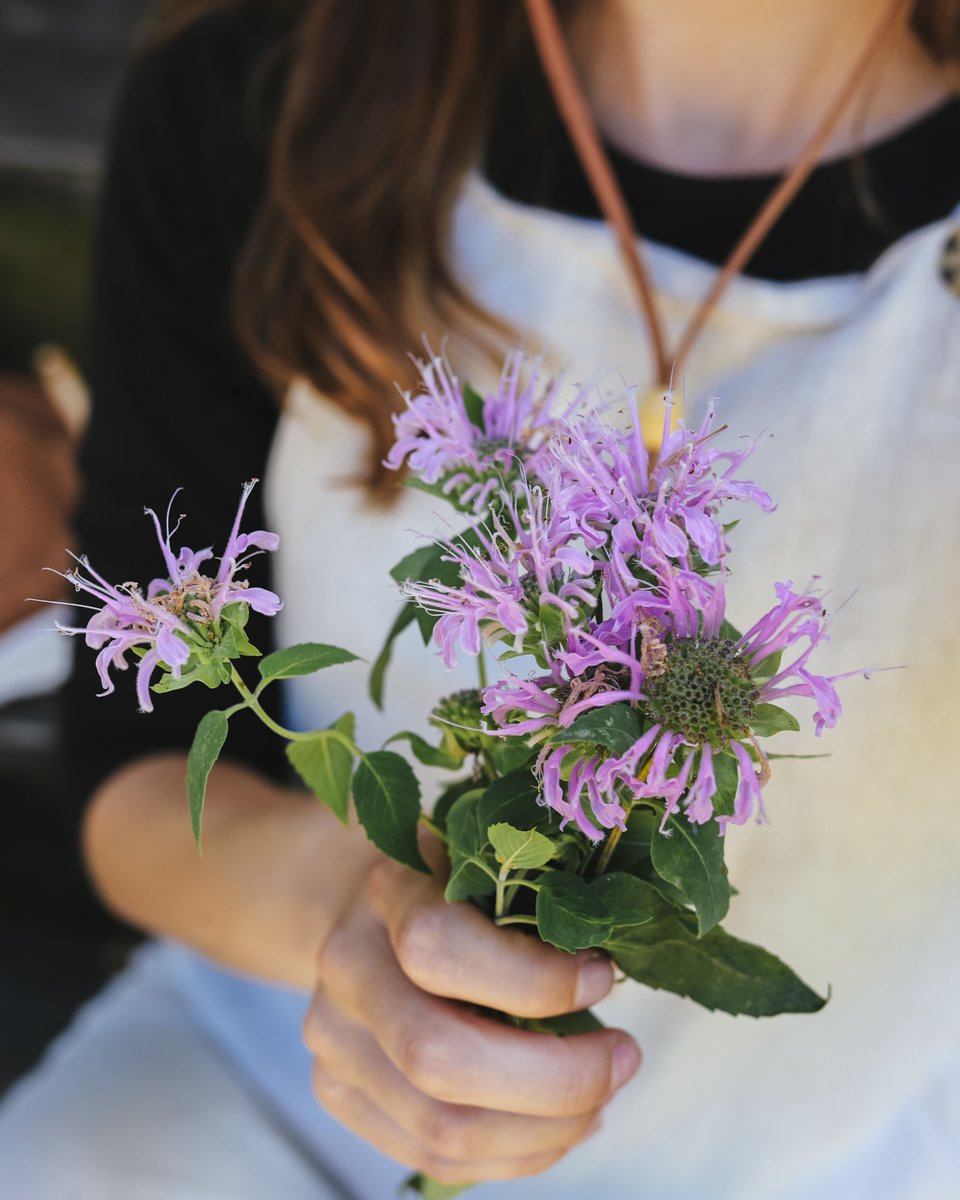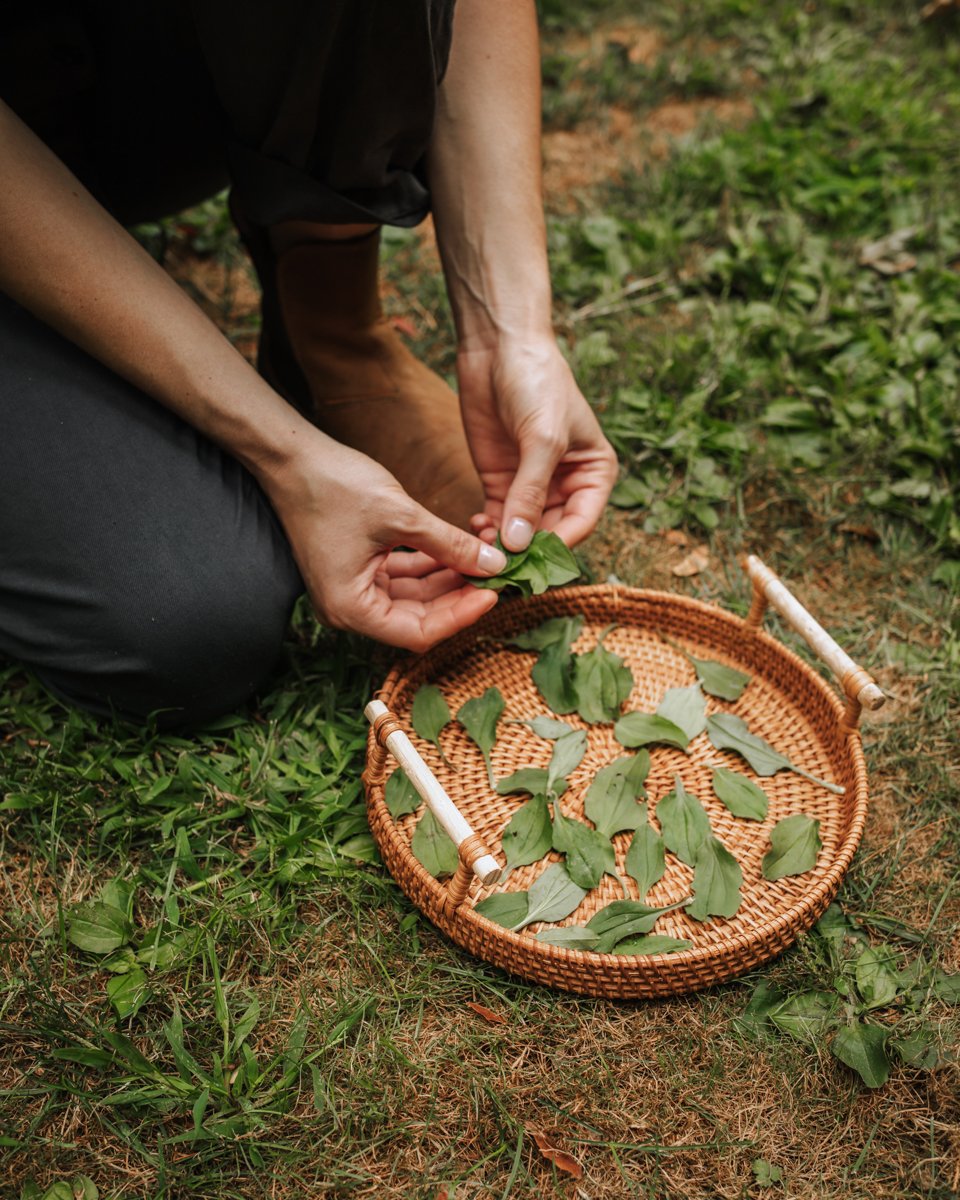The Art of Wildcrafting Herbs as Medicine
Wildcrafting is the practice of harvesting seasonal herbs and food from the wild. It fosters a deep connection with the plants in your local ecosystem, and it helps you gain access to vibrant plant material that’s hardy enough to withstand the elements without any human intervention. Rich in phytochemicals, vitamins, and minerals, the deep nourishment in these wildcrafted herbs is passed along to anyone who’s fortunate enough to consume the foraged plants as food or medicine.
Wildcrafting is an art that has been practiced by medicine people, shamans, curanderas, wild women, traditional Chinese practitioners, and herbalists for thousands of years. It lies at the heart of what healing was before the chemistry of modern medicine came to be.
Here at the Wildflower Clinic, we find great joy in recognizing the benefits and lessons bioregional (local) herbalism has to teach. As avid plant and Earth lovers, we wildcraft ~70% of our used herbs here in Colorado and partner with ethical wildcrafters across the US and internationally to ensure that the beautiful herbs we use are therapeutic in more ways than just the physical.
Regional herbs have much to teach us. It is often the herbs that surround us that are the herbs we need to maintain abundant health in the climate we’ve chosen to live in. They have evolved and grown to thrive in the local ecosystem, so within them contains that secret. A secret combination of nutritional constituents that they are willing to share if we treat them with respect and kindness, while recognizing that they are family.
Wildcrafted Herbs vs. Cultivated Plants
Wildcrafted herbs hold something incredibly precious. Each plant is made up of cells that contain special compounds called “phytochemicals”. These molecules have evolved with the plants to protect them against anything that may cause harm within their environment. Phytochemicals also provide nutrients and nourishment so the plant can thrive as a species.
Cultivated plants and herbs differ from wildcrafted herbs because they don’t have the same upbringing as their relatives. A cultivated plant grows in a comparatively “easy” climate without the hardship a wild herb undergoes to survive from day to day. This contrast manifests in the cell walls and the phytochemicals that the plants produce.
When a plant is genetically modified or has support from farmers and pesticides to grow, it doesn’t have to struggle as much to make its own protection (in the form of a phytochemical). It relies on the genes it has now inherited, the farmer who protects it, or the chemicals it was doused in to grow up big and sturdy. As a result, the potent phytochemicals that are supportive for the plant (and us!) aren’t needed as much, which means the phytochemicals don’t become as powerful and sometimes don’t even develop to start with.
The cultivation of plants with the use of chemicals and pesticides also harms the ecosystems that surround the plants. Leaving plants to grow naturally not only encourages the magical production of therapeutic constituents, but it also prevents genetic alterations (that may cause future species weakness) and keeps the Earth’s waters, land, and other creatures (including humans) free from harmful substances.
When we as humans thoughtfully use these medicinal gifts the plants have curated, we too receive the wonderful, nourishing, and therapeutic health benefits.
The Art of Wildcrafting
For millennia, our ancestors have worked with the Earth. They knew these plants, animals, and ecosystems to be family, we are a part of them, and they a part of us. When we needed herbs to heal and plants to eat, we harvested them with gratitude and respect, knowing that because we took only what we needed, nature would remain in harmony.
Unfortunately, wildcrafted herbs have become a hot commodity. Due to the booming $404.6 billion Complementary and Alternative Medicine Industry, herbs are in high demand. And with high demand comes competition and a race to supply. This mindset has brought imbalance to the order of the Earth. It has set in motion a “take” perspective rather than a “giving” or “gift” economy.
When we take from the Earth with the intention to give back, there is mutual respect, understanding, and love. We have each other's back. We support the health of the Earth and the Earth supports the health of us.
Wildcrafting herbs is about a symbiotic relationship with nature. It is about taking only what we need to nourish and support our wellbeing while remembering to be respectful of the ecosystem from which we took.
Wildcrafting 101
Here at the Wildflower Clinic, we follow specific guidelines to ensure our wildcrafting practices are sustainable and ethical. To uphold this set of principles, our wildcrafting team and partners have significant botany training and significant experience foraging in the wild. We've compiled an outline of some of our wildcrafting guidelines below:
Positive identification is our key principle for a safe wildcrafting experience. There are many look-alike plants out there, and some can cause harm to you if they are consumed unknowingly. Carrying a plant ID book is essential for all levels of wildcrafters. Even experienced foragers and botanists carry a plant ID book (Colorado Flora: Eastern Slope) in order to assist them with positive identification. Time in the wild and experience with plant ID's will foster familiarity with plants by their touch, scent, feel, and look.
Another reason why plant identification is extremely important is that many herbs are under threat of endangerment. Much of this reason is, unfortunately, due to the over-indulgence of humans foraging for wildcrafted herbs, so we want to stress this. Knowing which plants are on the species “at-risk” list - and should therefore be left in the ground - is a great place to start. The United Plant Savers, an organization the Wildflower Clinic is proudly partnered with, keeps this list updated with the objective to “assure the increasing abundance of the medicinal plants, which are currently in decline due to expanding popularity and shrinking habitat and range.”
Our next principle of wildcrafting refers to the amount of plants that is respectful to forage. We herbalists go by the 10% rule while keeping the “only what we need” thought in mind. It is respectful to gather 10% of a plant community if it is abundant. If there are only a few plants, for the sake of the species it is necessary to leave it in peace. If it is a popular area and other people may be wildcrafting as well, we consider only harvesting 5%. We uphold the “conscious and courteous” mantra.
When seeking out wildcrafted herbs, we always avoid any areas that may be contaminated with the everyday happenings of society. Roadsides, polluted areas, stagnant waters, etc. are all regions that are best left alone. The health of the plant is affected chemically by all of these factors and will not make safe medicine.
And finally, we always ask the Earth to forage and receive with gratitude. This takes some significant time around plants, but intuition is a mighty companion in this case. We look around us and observe. Does this seem like a place that supports the healthy growth of more herbs? Where are we foraging from? Are there enough plants that foraging won’t hinder the safety of the species? We’re cognizant that what the Earth has to offer is a humbling practice. If we feel as though nature accepts our request, we always give thanks in return. This ritual truly creates a long-lasting relationship with herbs.
In Closing
We choose to wildcraft as we believe it is a gift that we all have been given. Practicing kindness towards the places we choose to plant our feet, and showing respect to the green Earth that is our home, is a true form of art. When receiving medicine from our clinic, you can ensure that we are taking every step possible to use the most nutritionally replete herbs in order to bring your body back to balance.
The Wildflower Clinic offers a myriad of botanical education and wildcrafting opportunities throughout the year. Please get in contact with us on dana@wildflowerclinic.com should you be interested in joining one of these special opportunities.

